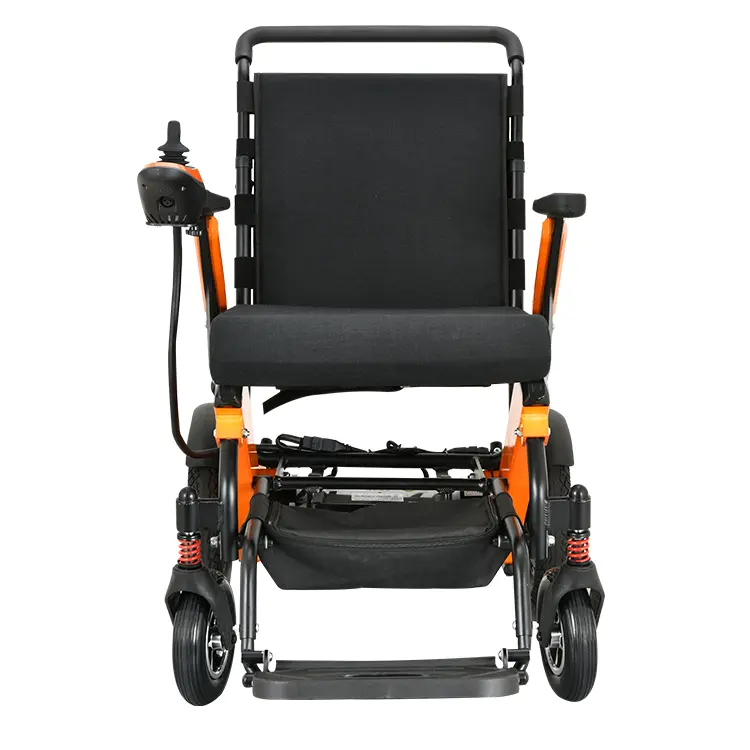North American Medical Institutions’ Requirements for Electric Wheelchair Range
I. Why is range a core necessity in North American medical settings?
Against the backdrop of an accelerating aging population in North America (the aging rate is projected to reach 21.3% in 2025), electric wheelchairs have evolved from assistive devices to a critical component of the healthcare system. Medical institutions’ stringent requirements for range are fundamentally a dual guarantee for both medical service efficiency and patient safety:
Multi-scenario Continuous Service Demand: Patients in rehabilitation centers travel an average of 8-12 kilometers per day, and community medical personnel must complete 3-5 home visits in wheelchairs. Interruptions in range can delay rehabilitation plans or emergency medical response.
Healthcare System Cost Control: Medicaid’s policy of covering 30% of purchase costs has led institutions to favor devices with longer ranges. Data shows that models with a range of over 50 kilometers can reduce annual charging costs and device idleness by 27%. Adaptability to Extreme Environments: The hilly terrain of the North American Midwest and the low temperatures of the Northeast in winter can cause battery efficiency to drop by 30%-40%, forcing institutions to raise their battery life redundancy standards.
II. Rigid Threshold: North American Regulations and Standards for Medical-Grade Battery Life
1. Federal Mandatory Certification Bottom Line
FDA 510(k) Core Requirements: As Class II medical devices (product code ITI), electric wheelchairs must pass a full-charge battery life test, with a minimum legal limit of 15 kilometers (approximately 9.3 miles), and must provide battery life degradation curves under different loads.
ANSI/RESNA Technical Specifications: This standard requires medical-grade wheelchairs to maintain a stable battery life of more than 17 kilometers on a flat surface with a 75kg load, and to pass battery life stability tests in high and low temperatures (-10°C to 40°C).
2. Implicit Standards of Purchasers Upgraded
Rehabilitation departments in large hospitals: Prioritize models with a range of 45 kilometers or more, to accommodate an average of 8 hours of daily intensive use (e.g., Mayo Clinic purchasing standards);
Community medical centers: Require a combination of fast charging technology (full charge within 2.5 hours) and a range of 30 kilometers to accommodate the mobility needs of home care;
Long-term care facilities: Emphasize battery cycle life, requiring at least 70% of initial range after 500 charge and discharge cycles.
III. Technical Decoding: Battery Life Solutions Meeting Medical Needs
1. Iterative Breakthroughs in Battery Technology
Lithium-Powered Upgrades: Lithium iron phosphate batteries boast an energy density of 350Wh/kg, 2.7 times higher than traditional lead-acid batteries, pushing ranges beyond 50 kilometers and becoming the preferred choice for North American medical institutions.
Intelligent Power Management: 80% of new medical wheelchairs are equipped with energy consumption monitoring systems that display the remaining range in real time on various terrains (asphalt, grass, and slopes), with an accuracy of less than 5%.
2. System Design for Optimized Battery Life
Balancing Lightweight and Energy Efficiency: The carbon fiber frame reduces the device’s weight by 42%, and combined with low-rolling-resistance tires, it reduces energy loss by 15%-20%.
Dual-Battery Redundancy: High-end models feature a swappable backup battery that supports hot-swappable replacement, ensuring uninterrupted battery life in emergency situations.
IV. Medical Institution Selection Guide: Key Considerations Beyond Battery Life
Scenario Adaptation Testing: Refer to the ISO7176-4:2008 standard and conduct battery life tests in real-world scenarios (such as hospital corridors and outdoor ramps) to ensure that laboratory data is consistent with actual use.
Complete Compliance Documentation: Suppliers must provide FDA 510(k) clearance, ANSI/RESNA test reports, and battery UN38.3 transport certification.
Lifecycle Cost: Prioritize models with a battery warranty of at least three years and fast charging (up to 80% in 1.5 hours) to reduce operational and maintenance costs.
Conclusion: Battery Life Reshapes the Value of Healthcare Services
North American healthcare institutions’ pursuit of battery life has long transcended mere mileage figures, evolving into a comprehensive consideration of service reliability, patient experience, and operational efficiency. With breakthroughs in lithium battery technology and the widespread adoption of intelligent management systems, electric wheelchairs with a range of over 50 kilometers and scenario-based energy consumption adjustments are becoming a mainstream choice for healthcare procurement. For equipment suppliers, only by deeply complying with FDA and ANSI standards and accurately matching the needs of segmented scenarios such as rehabilitation, community, and nursing can they gain an advantage in the $3.32 billion North American market.
Post time: Sep-17-2025


